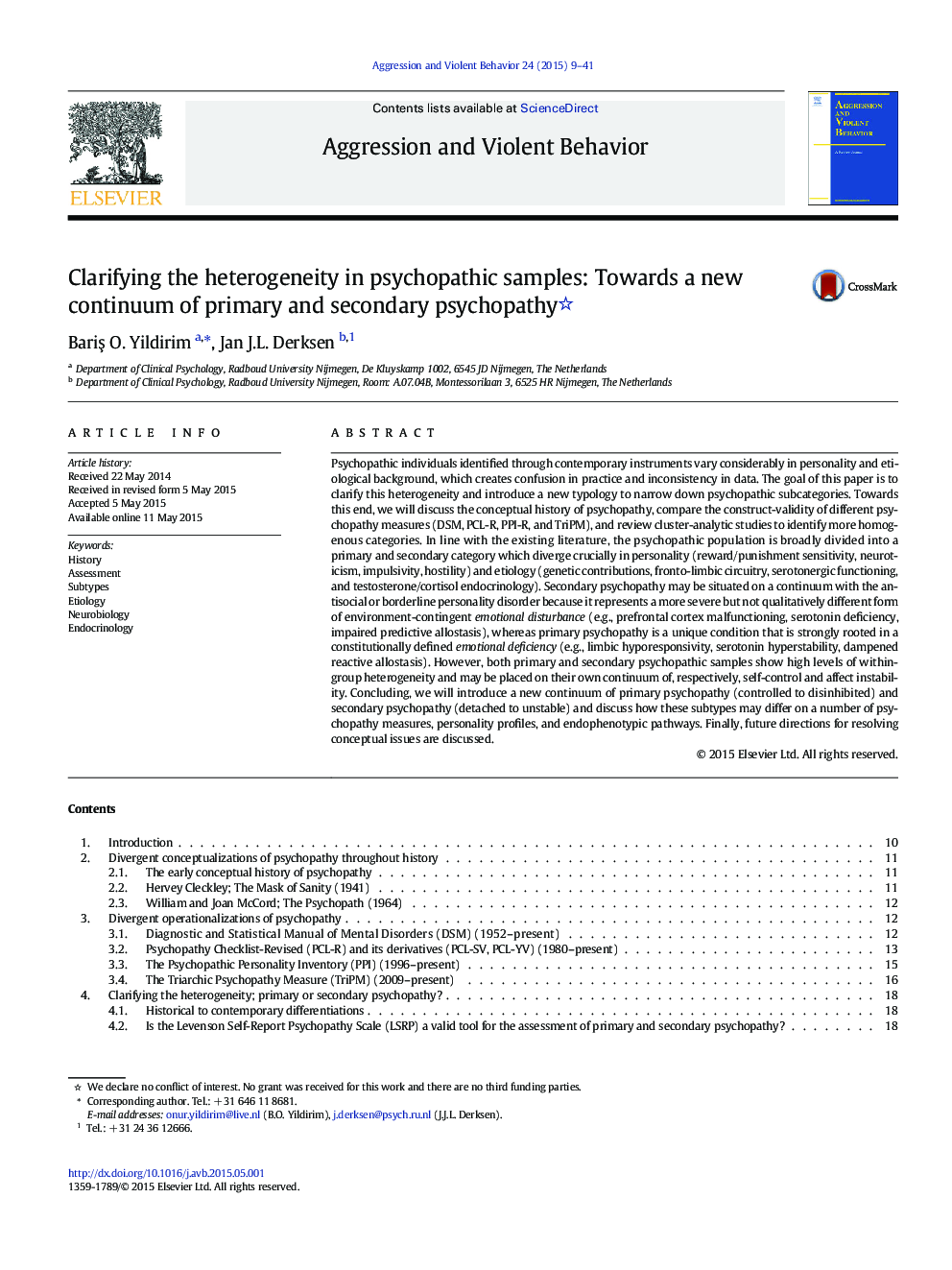| کد مقاله | کد نشریه | سال انتشار | مقاله انگلیسی | نسخه تمام متن |
|---|---|---|---|---|
| 94475 | 160300 | 2015 | 33 صفحه PDF | دانلود رایگان |
• Psychopathy has been operationalized through a variety of conflicting ways.
• Empirical evidence supports the differentiation of primary and secondary variants.
• Primary and secondary variants differ psychologically, behaviorally, and biologically.
• Primary and secondary psychopathy can be further differentiated into separate subtypes.
• These subtypes vary in personality, psychopathic traits, and etiological mechanisms.
Psychopathic individuals identified through contemporary instruments vary considerably in personality and etiological background, which creates confusion in practice and inconsistency in data. The goal of this paper is to clarify this heterogeneity and introduce a new typology to narrow down psychopathic subcategories. Towards this end, we will discuss the conceptual history of psychopathy, compare the construct-validity of different psychopathy measures (DSM, PCL-R, PPI-R, and TriPM), and review cluster-analytic studies to identify more homogenous categories. In line with the existing literature, the psychopathic population is broadly divided into a primary and secondary category which diverge crucially in personality (reward/punishment sensitivity, neuroticism, impulsivity, hostility) and etiology (genetic contributions, fronto-limbic circuitry, serotonergic functioning, and testosterone/cortisol endocrinology). Secondary psychopathy may be situated on a continuum with the antisocial or borderline personality disorder because it represents a more severe but not qualitatively different form of environment-contingent emotional disturbance (e.g., prefrontal cortex malfunctioning, serotonin deficiency, impaired predictive allostasis), whereas primary psychopathy is a unique condition that is strongly rooted in a constitutionally defined emotional deficiency (e.g., limbic hyporesponsivity, serotonin hyperstability, dampened reactive allostasis). However, both primary and secondary psychopathic samples show high levels of within-group heterogeneity and may be placed on their own continuum of, respectively, self-control and affect instability. Concluding, we will introduce a new continuum of primary psychopathy (controlled to disinhibited) and secondary psychopathy (detached to unstable) and discuss how these subtypes may differ on a number of psychopathy measures, personality profiles, and endophenotypic pathways. Finally, future directions for resolving conceptual issues are discussed.
Journal: Aggression and Violent Behavior - Volume 24, September–October 2015, Pages 9–41
